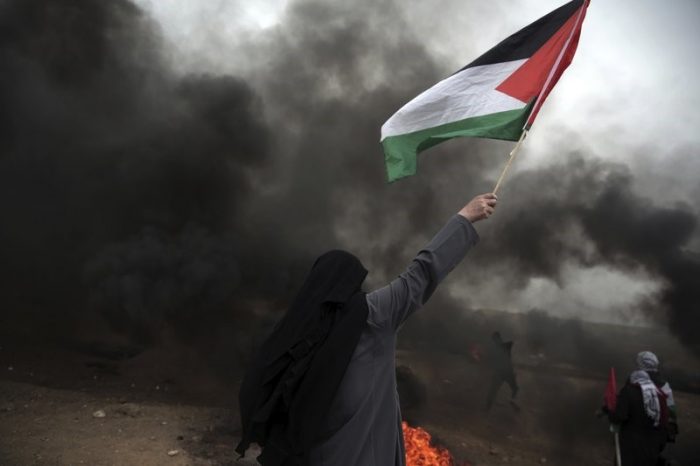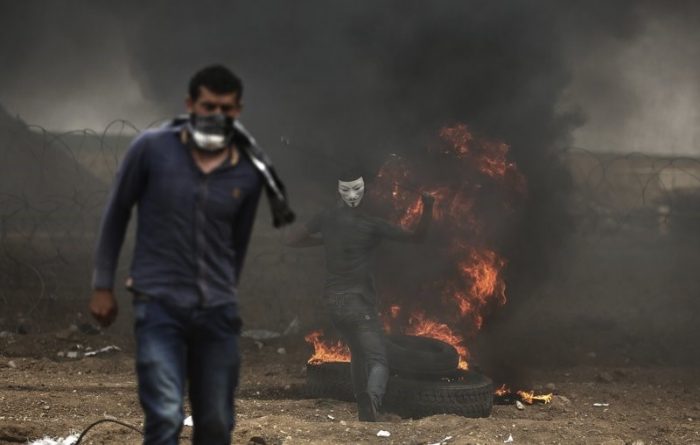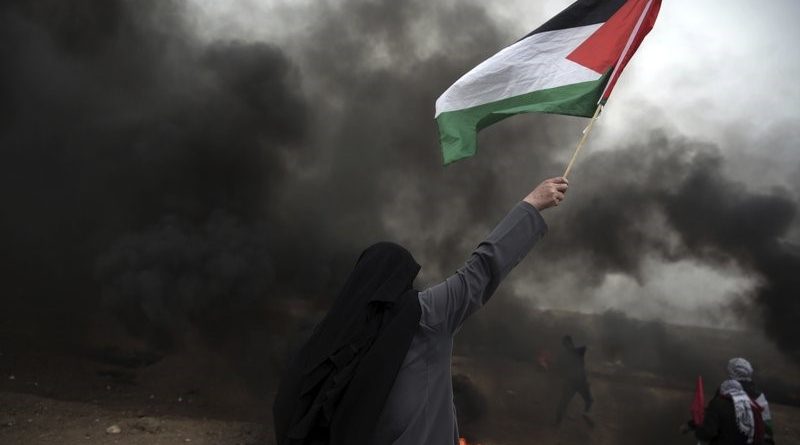Tennis Rackets and Kites: Palestine’s Response to Israel’s Military
By Felipe Bueno
Editor-in-Chief
Friday March 4 marked the sixth consecutive week of the Palestinian “Great Return March,” a grassroots movement that aims to return Palestinian refugees living in Gaza to Israel, reports the New York Times.
According to the Israeli army, the protests consist of multiple independent movements. Collectively, there are 10,000 Palestinians participating in riots in six locations along Gaza’s 25-mile border, reports Reuters. Armed with homemade weapons, Palestinians have stood against the Israeli army for nearly two months with no sign of retreat.

The protester’s tactics are simple but effective against an army that receives billions in military aid from the United States. Protesters begin by rolling burning tires to the edge of the border, thereby creating a line of smoke to shield them from Israeli sniper fire, reports Reuters.
Under the cover of smoke, Palestinians risk their lives throwing rocks at the same border troops who killed 42 Palestinians over the past month.

Due to limited visibility, Israeli border troops often retaliate with tear gas as a means of impeding the Palestinian’s stone-throwing. The troops aim to push protesters back far enough to prevent hand-thrown rocks from reaching Israeli soldiers. The Palestinian response is as ingenious as it is simple: using tennis rackets to return tear gas canister back over the border, reports Reuters.
As a means of combating visibility challenges, the Israeli army deployed two reconnaissance drones that were subsequently downed by Palestinian slingshots, an act confirmed by the Israeli army, says Reuters.

The Israelis are not the only side with aerial capabilities. Albeit more archaic than reconnaissance drones, Palestinian protesters utilized kites fitted with combustible materials as homemade incendiary weapons, reports the New York Times. These kites were designed to fly over the border and, using gasoline-soaked rags, cause fires in Israeli communities on the other side. The kites have had middling success due to their reliance on the wind’s direction.

According to Reuters, 82 people have been shot and wounded by the Israeli army, with 800 treated for respiratory injuries from tear gas.
Despite its current violence, the protest was initially intended to be a movement of civil disobedience, reports the New York Times. Ismail Haniya, the political leader of Hamas, spoke in support of a nonviolent movement intent on achieving Palestinian recognition. However, many viewed the involvement and statements of Haniya, who in the past supported terrorist acts such as suicide bombings, as disturbing in the context of a nonviolent protest.
Towns on the Israeli side of the border continue to suffer as a result of the protest, says The Jerusalem Post. Farmers in the small Israeli town of Nahal Oz are at risk of losing their crops to the incendiary weapons utilized by the Palestinian refugees, with some farmers leaving as a result of the violence. Despite loses on both sides, neither one is willing to negotiate peace talks.

